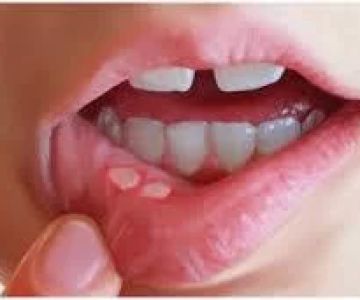Oral Infections: Origins and Complications
Oral infections are a broad term encompassing multiple types of infections within the oral cavity. They can originate from dental or non-dental sources. Viruses, bacteria, and fungi are common culprits. Poor oral hygiene is a significant factor leading to these infections. Plaque build-up around teeth and on the tongue surface increases the risk of damage to teeth and soft tissues, potentially causing severe complications if left untreated.
Dental and Non-Dental Infections
Dental infections often result from intraoral bacteria penetrating the tooth structure or supporting tissues. This can lead to enamel breakdown, pulp inflammation, and dental abscess formation. Non-dental infections typically affect the mucous membrane and can be caused by various viruses, bacteria, or fungi. Examples of viral infections include Herpes Simplex Virus, Herpes Zoster, and others. Bacterial infections like syphilis or tuberculosis can cause oral ulcers, and the most common fungal infection is oral candidiasis due to a weakened immune system. Other infections like lichen planus, infectious mononucleosis, and more can also occur due to various factors.
Risk Factors and Epidemiology
One of the major risk factors for oral infections is poor oral hygiene, which can lead to tooth problems and affect surrounding soft tissues. Bacterial overgrowth from excessive plaque accumulation damages the tooth structure and causes infections. Nutritional deficiencies, dry mouth, stress, diabetes, hormonal imbalance, and a weakened immune system also increase the risk. Oral infections can occur at any age, with dental infections being more common in children due to high sugar intake and secondary oral infections more frequent in adults over 40.
Symptoms and Diagnosis
The signs and symptoms of oral infections vary depending on the cause. Viral infections may present with cluster-like lesions, while bacterial and fungal infections can cause redness or ulceration. Tooth-related infections cause pain, sensitivity, and tenderness. Diagnosis involves a detailed history and thorough clinical examination. Dental origin infections are diagnosed through various methods, and viral, bacterial, or fungal infections are diagnosed based on their features. Sometimes, a swab test is necessary.
Differential Diagnosis and Treatment
Oral infections need to be differentiated from other conditions like pemphigus Vulgaris, erythema multiforme, and more. Treatments vary depending on the cause. Tooth-related infections may require surgical procedures, while viral infections usually only need symptomatic care. Bacterial infections need treatment for the primary infection, and fungal infections may require topical antifungal ointments or rinses. Pain management options include topical analgesics and oral painkillers.
Prevention and Prognosis
Preventing oral infections involves maintaining oral hygiene, brushing teeth twice daily, using antiseptic mouthwashes, keeping the mouth hydrated, and taking necessary vitamins and minerals. Avoiding direct contact with infected persons and not sharing toothbrushes and razors is also important. Regular dentist visits every six to eight months can reduce risk factors. The prognosis of most oral infections is good with early diagnosis and appropriate treatment, but severe dental cases may require tooth extraction.
Oral Health and Sepsis
World Oral Health Day highlights the importance of good oral care. Oral diseases are prevalent and preventable. Untreated tooth decay can lead to serious complications like abscesses and potentially spread to other parts of the body. Maintaining good oral hygiene is not only crucial for oral health but also for overall well-being and preventing conditions like sepsis.
Oral infections are a significant concern that can have various causes and complications. Understanding the factors that contribute to them and taking preventive measures is essential for maintaining good oral health. By being vigilant about oral hygiene, avoiding risk factors, and seeking timely diagnosis and treatment, one can minimize the risk of oral infections and their potential negative impacts on overall health.



 Maui Whitening Orlando4.0 (32 review)
Maui Whitening Orlando4.0 (32 review) Bloomington Southside Dental Care3.0 (26 review)
Bloomington Southside Dental Care3.0 (26 review) Christiana Dental Center4.0 (650 review)
Christiana Dental Center4.0 (650 review) Carolina Dental Arts - New Bern Ave4.0 (152 review)
Carolina Dental Arts - New Bern Ave4.0 (152 review) Equitas Health Short North Medical Center3.0 (96 review)
Equitas Health Short North Medical Center3.0 (96 review) Prosthodontics of Madison - Kendra Schaefer, DMD & Christine Roenitz, DMD4.0 (25 review)
Prosthodontics of Madison - Kendra Schaefer, DMD & Christine Roenitz, DMD4.0 (25 review) The Importance of Oral Health Education During Pregnancy for a Healthy Pregnancy
The Importance of Oral Health Education During Pregnancy for a Healthy Pregnancy Best Tips for Brushing Your Teeth Properly for Healthy Gums: Essential Techniques for Oral Health
Best Tips for Brushing Your Teeth Properly for Healthy Gums: Essential Techniques for Oral Health Why Skipping Dental Checkups Can Lead to Bigger Oral Health Problems
Why Skipping Dental Checkups Can Lead to Bigger Oral Health Problems Advantages of Porcelain Dental Restorations
Advantages of Porcelain Dental Restorations How Can Diabetes Cause Tooth and Gum Problems? Preventing and Managing Oral Health Issues
How Can Diabetes Cause Tooth and Gum Problems? Preventing and Managing Oral Health Issues Healthy Habits for Promoting Good Oral Health and Hygiene: Tips for a Healthy Smile
Healthy Habits for Promoting Good Oral Health and Hygiene: Tips for a Healthy Smile